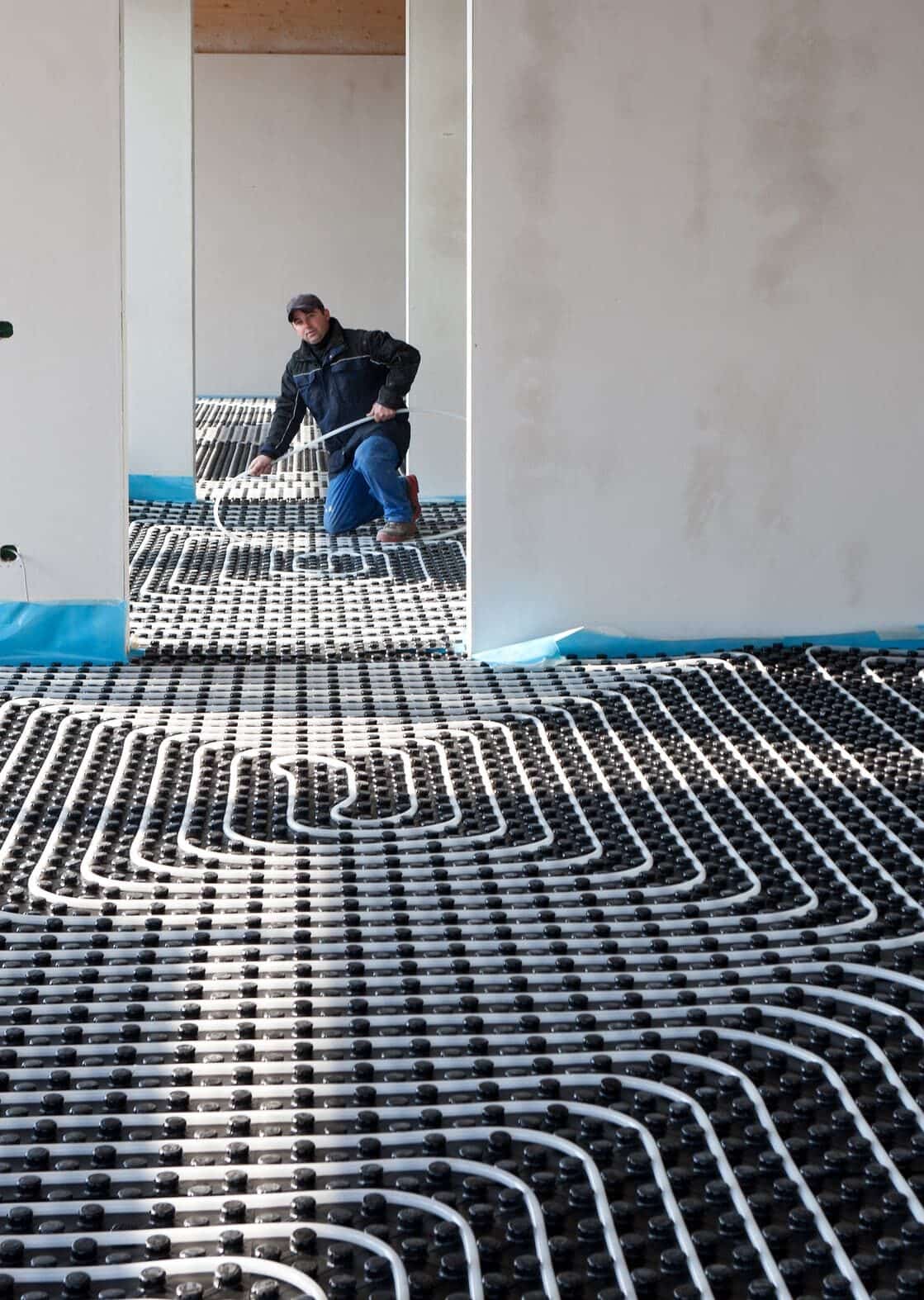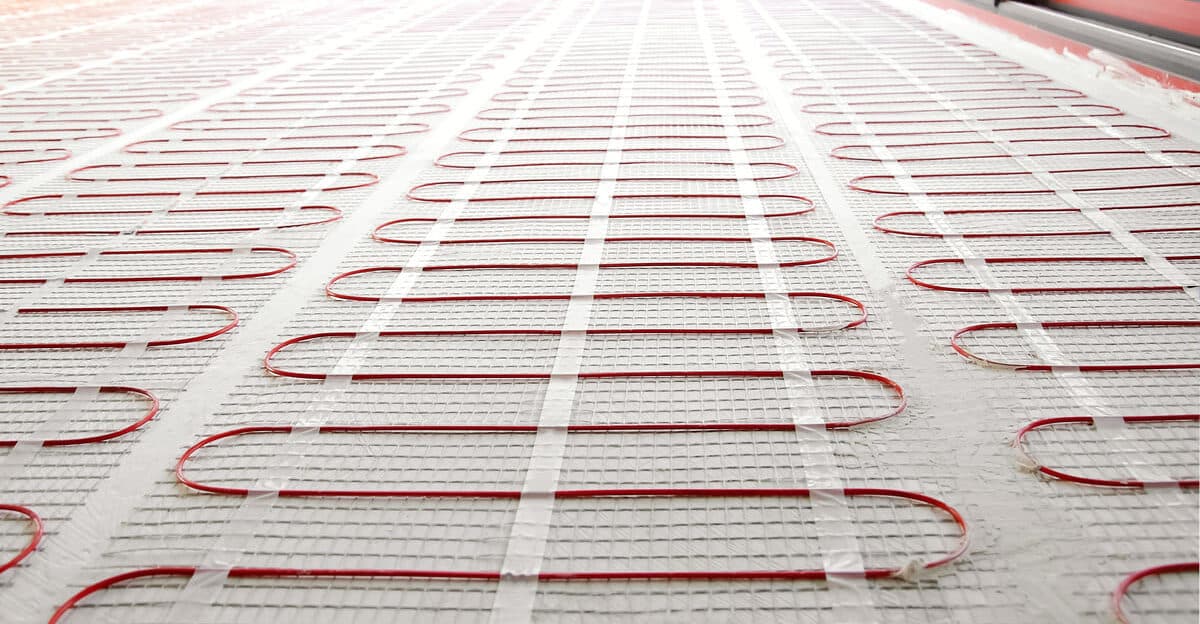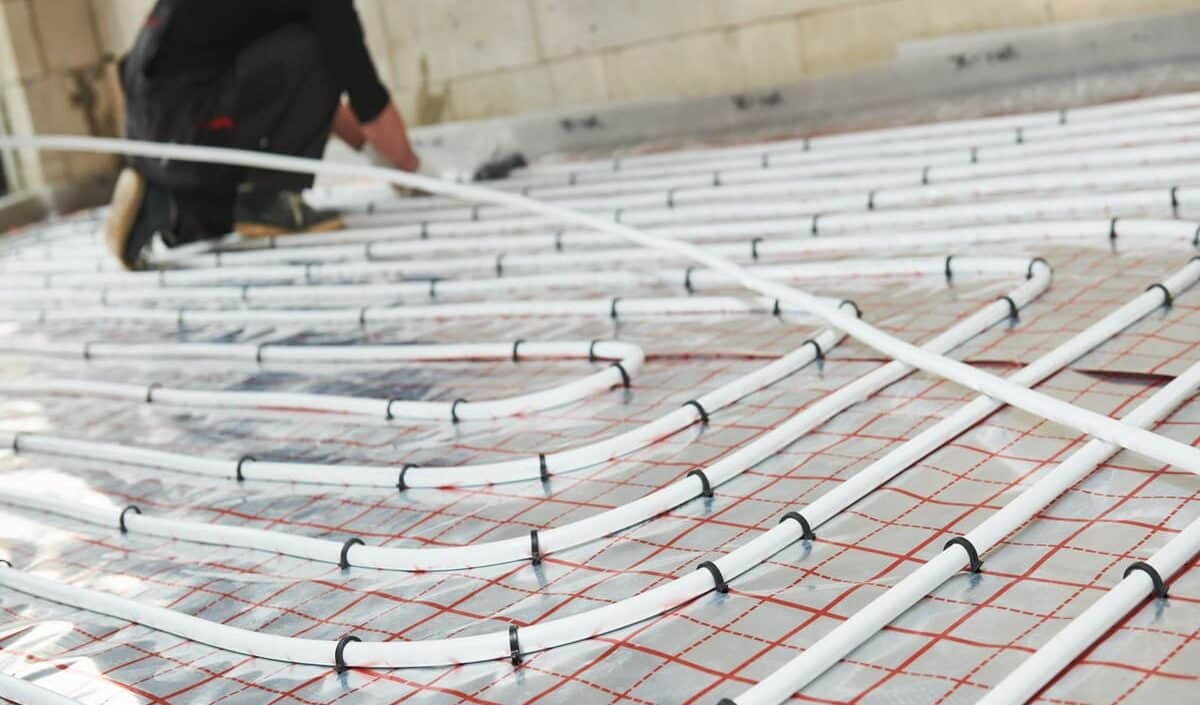

There are many factors to consider when calculating the cost of underfloor heating, such as the type of system, the size and layout of your home, and the insulation boards used. Electric underfloor systems are typically more expensive to install than water-based systems, but they offer a number of benefits including lower running costs and easier installation. Insulation boards are also an important factor in determining the cost of underfloor heating, as they help to reduce heat loss and improve efficiency.
The cost of underfloor heating for a new build will generally be higher than an old property due to the additional labour and materials required. New builds typically require more insulation and a larger area to be heated, which can add up in terms of both time and money. On average, you can expect to pay between £8-£25 per m2 for installing underfloor heating in a new build.
For an older property, the costs may be lower as there is less work involved. Typically, you should expect to pay between £4-£15 per m2 for installing underfloor heating in an old property.
There are a few factors that will affect the cost of your underfloor heating installation. The first is whether you need to replace your existing boilers or if you can simply add an additional heating system. The second is whether you want to use renewable energy, which will likely increase the initial cost but save you money in the long run.
You might be wondering whether it’s worth retrofitting your home with underfloor heating, or if you’re better off starting from scratch with a new build. The answer to this question depends on a few factors, including the cost of installation and the type of electric system you have in place.
If you’re starting from scratch with a new build, then installing underfloor heating is generally more cost-effective than conventional radiators. This is because you can incorporate the heating system into the overall design of the property, rather than having to make costly alterations later down the line.
However, if you’re retrofitting an existing property, then the costs can vary depending on the type of electric system you have in place. If you have an existing gas or oil central heating system, then it’s usually more cost-effective to stick with this rather than converting to an all-electric system. However, if you have an all-electric system in place, then retrofitting underfloor heating may be your best option.
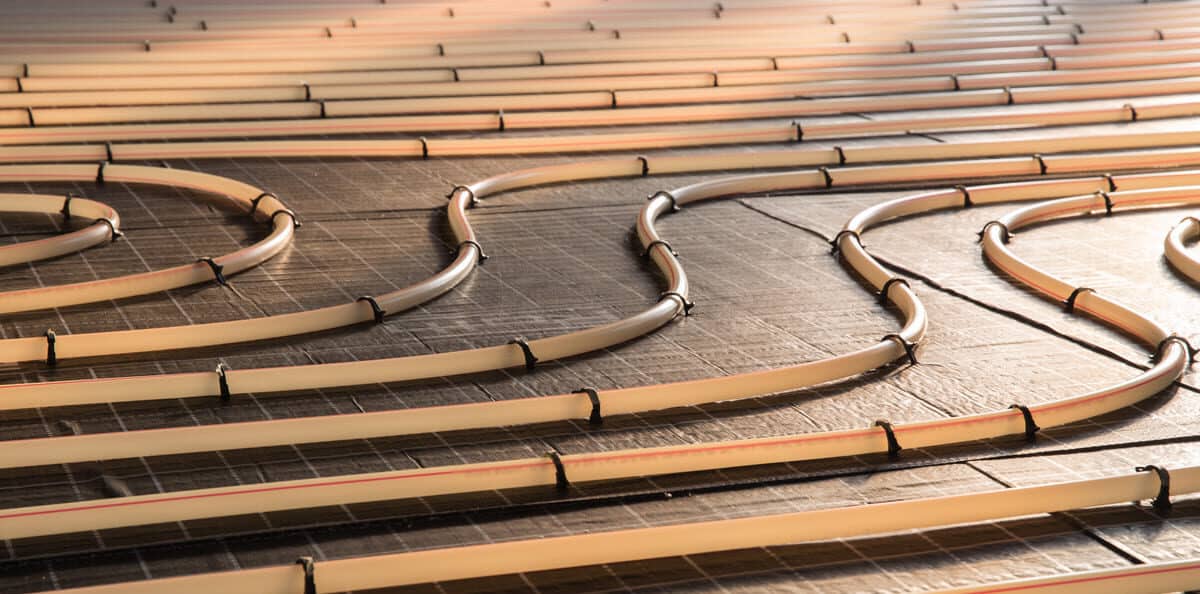
You have a few different options when it comes to the type of flooring you can use with underfloor heating. This includes tile, stone, concrete, and laminate floors. While there are other types of flooring that can be used, these are the most common. Each type of flooring has its own set of pros and cons that you’ll need to consider before making a decision.
Tile floors are a popular choice for those who want to use underfloor heating. They’re durable and easy to clean, but they can be cold to the touch. Stone floors are also durable and easy to clean, but they tend to be more expensive than tile floors. Concrete floors are another option that’s becoming increasingly popular. They’re durable and offer good heat retention, but they can be difficult to install. Laminate floors are a budget-friendly option that’s easy to install, but they don’t offer as much heat retention as other types of flooring.
You may find that you need to do some additional work in order to get your underfloor heating up and running. This can include things like installing insulation or making sure that your flooring is compatible with the system. While this may add to the cost of installation, it is worth it to make sure that your underfloor heating is installed correctly and will work efficiently.
If you’re considering installing underfloor heating in your home, there are a few additional things to keep in mind. First, wet underfloor heating systems require more floor space than radiator systems. This means that you’ll need to have enough space in your room to accommodate the system. Additionally, you’ll need to make sure that the flooring in your room can handle the heat. Some materials, like carpet, may not be suitable for use with underfloor heating.
If you’re planning an underfloor heating project, you may need to consider relocating your boiler. Underfloor heating systems work best with low-temperature water, so your boiler will need to be able to provide this. Insulation boards can help to make sure that the heat from your underfloor heating system is evenly distributed.
You’re interested in moving or removing a radiator and want to know the cost. Radiators are generally less energy efficient than dry systems like underfloor heating, so you may want to consider that when making your decision.
The cost of moving or removing a radiator will vary depending on the size and type of radiator. Smaller radiators can cost as little as 50 pounds per square metre, while larger ones can cost up to 100 pounds per square metre.
We Are Also Available to Offer Heat Pumps Related Advice
To find out more about our services, get free quotations, or arrange an appointment, call this number 0204 586 6171.
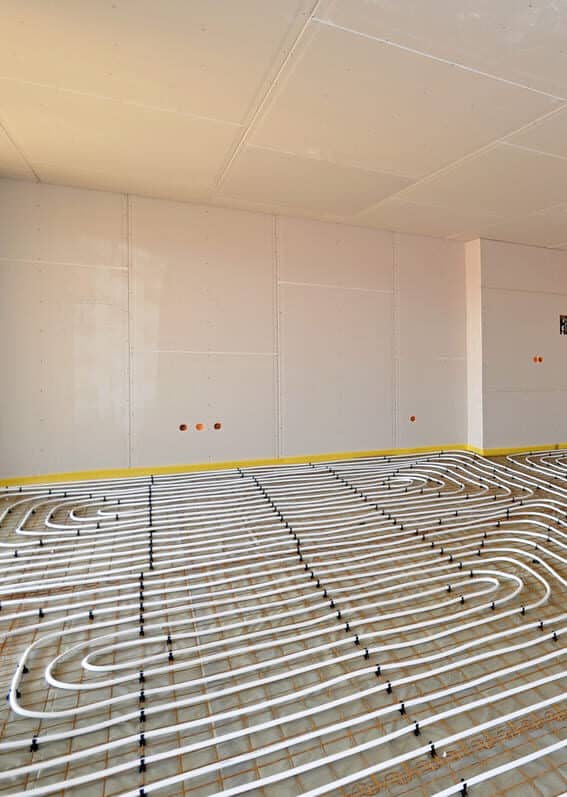
The cost of running underfloor heating will vary depending on the type of system and how it is operated. Generally, electric systems are more expensive to run than hydronic systems due to their higher running costs. The amount of energy used will also depend on factors such as the size of the room, insulation levels and thermostat settings. In general, it is estimated that electric underfloor heating can cost between 15p and 25p per hour to run while a hydronic system can cost between 6p and 12p per hour.
You’re probably wondering about the cost of running underfloor heating in your home. The two main types of underfloor heating are warm water and electric, and each has its own set of pros and cons.
Warm water underfloor heating is more expensive to install than electric, but it’s also more efficient, so it will save you money in the long run. Electric underfloor heating is cheaper to install, but it’s more efficient than warm water, so it will cost you more to run.
As the owner of a underfloor heating system, there are several factors that will affect the running costs of your system. The first is the type of system you have installed. The most common types of underfloor heating are electric and water-based systems. Electric systems tend to be more expensive to run, but they are also more efficient. Water-based systems are less expensive to run, but they are not as efficient.
The second factor that will affect the running costs of your system is the size of your home. If you have a large home, you will need to use more energy to heat it than if you have a small home. The third factor is the climate in your area. If you live in an area with a cold climate, you will need to use more energy to heat your home than if you live in an area with a warm climate.
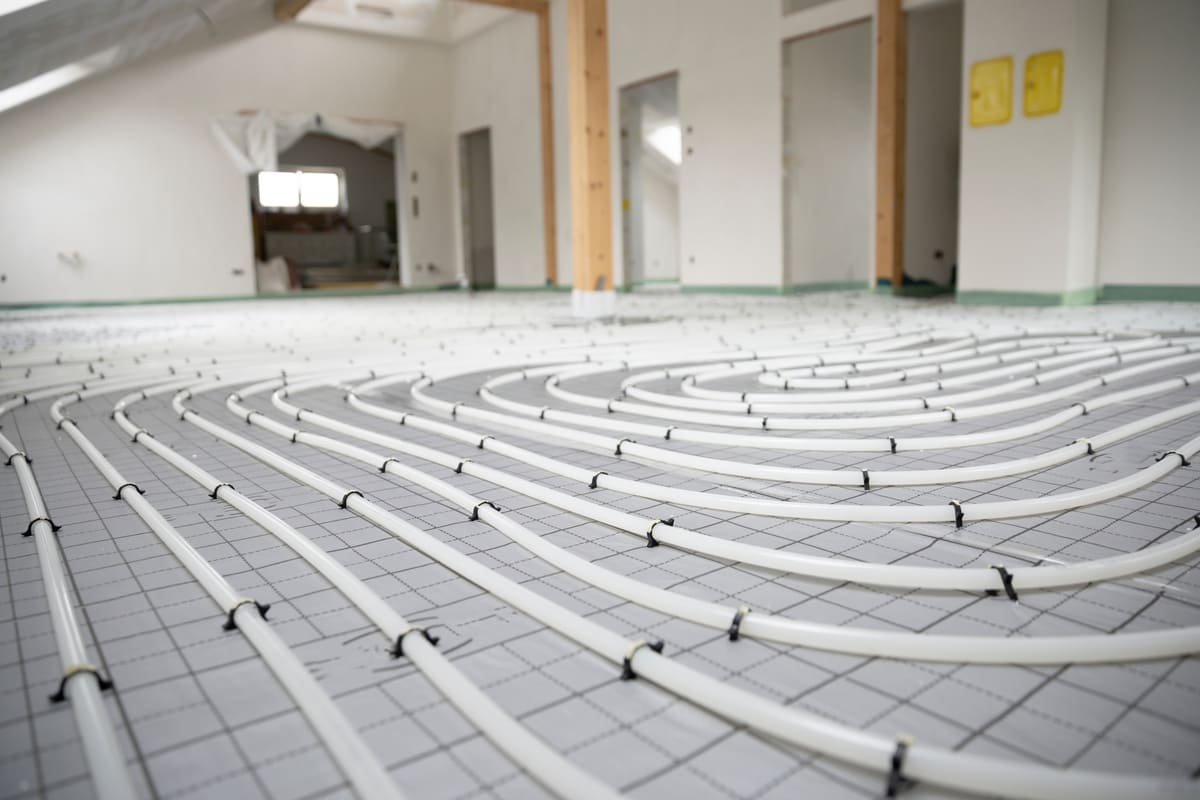
You have a few options when it comes to heating your home. One option is an electrical system, which uses heat pumps to pump hot water through your floors. This type of system is efficient and can be used in any climate. Another option is a gas-fired system, which uses a furnace to heat air, which is then circulated through your home. This type of system is best for homes in colder climates.
You may be wondering why you would need a multi-zone heating system. After all, one central heating system should be enough to heat your entire home, right? Well, there are actually several benefits to having a multi-zone heating system, especially when it comes to your heating bills.
For one thing, a multi-zone heating system allows you to better control the temperature in different areas of your home. This means that you can keep the temperature lower in areas that you don’t use as often, which can lead to significant savings on your heating bills.
Another benefit of a multi-zone heating system is that it can help to even out the temperature in your home. This is especially helpful if you have rooms that tend to be warmer or cooler than others. By using a multi-zone system, you can ensure that everyone in your home is comfortable.
If you’re installing underfloor heating, it’s important to know about the different types of flooring that can be used with a wet underfloor system. This type of system uses water to generate heat, so it’s important to make sure that the flooring you choose is compatible.
You may be wondering why you need to insulate your home if you’re already using an electric underfloor heating system. The answer is twofold: first, because traditional radiators require a lot of heat to warm up a room, and second, because an additional heating system will add to your overall energy costs. By insulating your home, you can reduce the amount of heat lost through walls and floors, which means that your underfloor heating system will be more efficient and cost-effective in the long run.
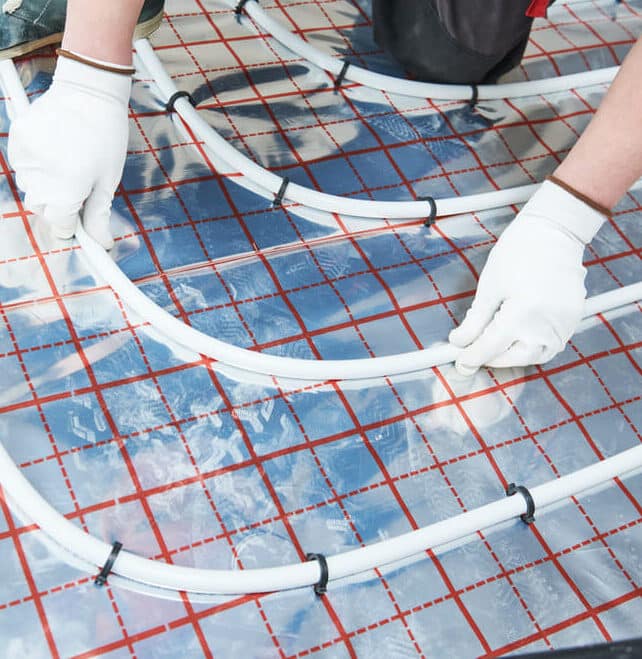
You might be wondering how eco-friendly underfloor heating is. After all, it does use energy to generate heat. However, there are a few factors that make underfloor heating a more environmentally friendly option than other forms of heating, such as traditional radiators.
For starters, underfloor heating is very efficient in terms of the amount of energy it uses. This is because the heat is distributed evenly across the floor, rather than being concentrated in one area like with a radiator.
This means that you won’t need to use as much energy to heat your home, which is better for the environment.
Another factor that makes underfloor heating more eco-friendly is the fact that it doesn’t require water. This means that there’s no risk of water leakage or flooding, which can happen with other types of heating systems (such as boiler-based systems).
This also means that you won’t need to use as much water, which is good for drought-prone areas. So, if you’re looking for an eco-friendly way to heat your home, underfloor heating is definitely worth considering!
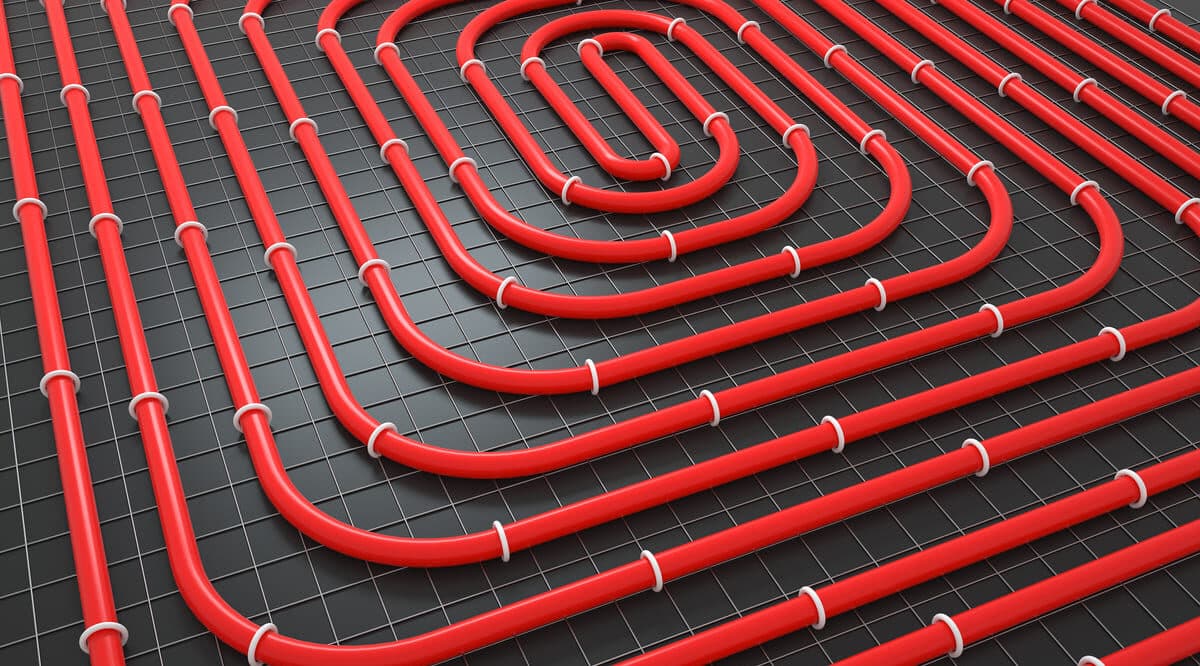
You can improve the energy-efficiency of your electric systems by making sure your annual energy bills are up to date and by controlling the temperature in your home. You can also save money on your energy bills by using energy-efficient appliances and by insulating your home.
You can increase the efficiency of your underfloor heating system by increasing the insulation in your home. This will help to keep the heat in, and reduce your heating costs. There are a number of different dry systems available, and you can find one that suits your needs and budget.
We Are Also Available to Offer Heat Pumps Related Advice
When it comes to underfloor heating, there are a few things to consider. The cost of installation and the running costs are important factors to think about. Underfloor heating can be more expensive to install than traditional heating methods, but it is often more energy efficient. This means that over time, you could save money on your energy bills. The cost of underfloor heating will also depend on the size of your home and the type of flooring you have.
You’re probably wondering if underfloor heating could save you money on your heating costs. The answer is yes! Underfloor heating is a more efficient way to heat your home because it evenly distributes heat throughout the room. This means that you won’t have to waste energy by heating up empty space. Additionally, underfloor heating systems are easier on your electrical system because they don’t require as much power to operate. So not only will you save money on your energy bills, but you’ll also save money on repairs and maintenance for your electrical system.
You’re looking for a company to install your underfloor heating system. But with so many options out there, how do you know who to choose? Here are a few reasons why Mittens Underfloor Heating London should be your go-to choice for underfloor heating installation:
We’re experts in the field. We’ve been installing underfloor heating systems for years, and we know exactly what it takes to get the job done right.
We’re affordable. We understand that not everyone can afford a high-end central heating system. That’s why we offer competitive pricing on all of our services. We’re reliable. When you choose us for your underfloor heating installation, you can rest assured knowing that the job will be done properly and on time.
